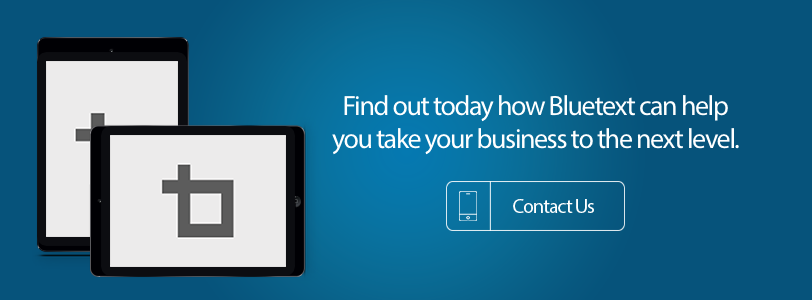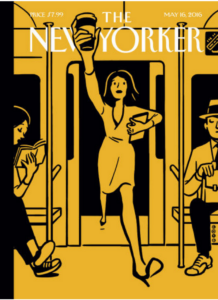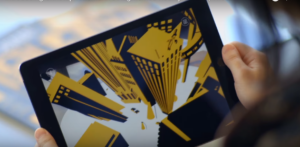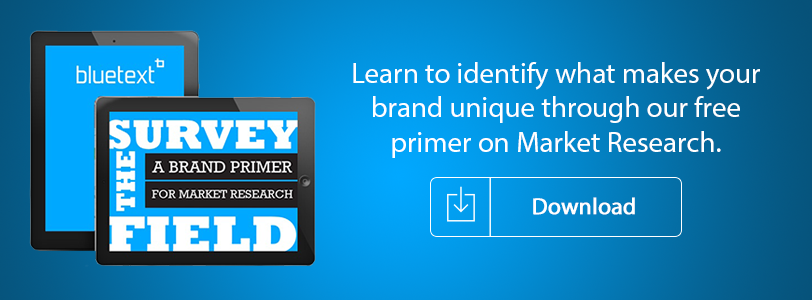MediaPost, the largest and most influential media, marketing and advertising site on the net, featured Bluetext’s work with cybersecurity client Varonis to create a virtual reality marketing campaign for EMC World 2016. Our Partner and Chief Creative Officer Jason Siegel shared the ways that virtual reality can advance B2B marketing goals, engage new customers and help clients stand out from the crowd. Here is an excerpt from the article:
Let’s talk B-to-B.
But not boring! Virtual reality is working out in surprisingly interesting ways for Bluetext, a digital marketing firm based in Washington, D.C. Although its business has lots of of well-known clients with more conventional campaigns, Bluetext is creating a niche for itself producing 360-degree videos for some customers.
Varonis Systems, supplier of a software platform that lets companies structure their data and detect leaks in the organization, has a complicated business supplying security for IT systems.
VR, it turns out, does a good job of providing complex information. And because of the VR aspect, at least at this early stage of the game, B-to-B 360-degree videos can get gawking attention from client-customers.
So Bluetext created an intricate multilayer 360-degree video, which the company provides to would-be clients. The Varonis “digital briefcase session” lets viewers veer off on these virtual tours. A company’s chief tech officer can go off in that direction, while the HR exec aims his goggles in another direction. (You can imagine the conference room scene.)
This is probably the least important part, but I love it. Varonis took its VR exhibit to the crowded, noisy EMC World show floor in Las Vegas, and at that crucial tech show, it captured a very distractible bunch of floorwalkers by handing out headsets — branded with the corporate logo. Then they hustled them into the booth to watch the briefing.
Varonis increased its traffic six fold with all those customers watching video. (Varonis also offers a VR app at Google and Apple stores.)
“If you think of those shows like those fighting for attention with their noisy 10 by 10 booths, you can see the advantage of just giving them a Cardboard and letting them watch,” says Bluetext founder Jason Siegel…
Siegel points out, excitedly, “There is research that shows sales increase the more senses are involved,” and spherical video has at least three–hearing, seeing and feeling. That’s one more than everybody else.
Here’s the full article.
To learn more about how Bluetext is leading in VR, reach out today:

It’s been an exciting summer here at Bluetext, and to top it all off, our Chief Creative Officer Jason Siegel is speaking at BizBash’s Elevate DC 2016 on August 3rd about his ideas and insights on the many cool things happening in our office and the industry in general. Jason will head to the Reagan Center here in Washington on August 3rd to participate in this one-day conference for meeting and event professionals. Filled with engaging speakers from a variety of industries, Elevate DC promises to be a great time, and Bluetext is honored to participate.
Jason will speak about “The New Rules of Social Media and Event Marketing”, sharing the way that social media engagement and other innovative marketing strategies can help businesses drive interest and registration for events. Following up on Bluetext’s recent virtual reality campaign for Varonis, Jason will discuss how to seamlessly integrate VR into an event marketing strategy. He will also be exploring how to use a three-part, campaign-style approach to maximizing event reach and creating urgency to register.
To see Jason’s presentation and the many other great speakers coming to Elevate DC this year, you can register here. And to learn more about how Bluetext is on the cutting of VR, reach out today:

If Dunkin’ Donuts plasters ads on the inside of city buses, it is because they believe riders exposed to the brand – over time – will be more inclined to stop for coffee and a donut at DD rather than at Starbucks, McDonald’s, Krispy Kreme, what have you. Or even that a consumer getting on a bus not thinking about coffee or donuts will exit the bus with these items at the forefront of their consciousness.
If Dunkin’ Donuts continues with this line of thinking, they will ask themselves what else could persuade riders beyond “seeing” an ad of the brand logo and pictures of the products? Would riders be further compelled if they could “smell” the coffee or glazed donuts on the bus?
Over the past few months, we’ve been talking a lot about augmented reality marketing and virtual reality marketing – two important pieces of the sensory marketing puzzle. Effective marketing requires engaging all or many senses, however, so CMOs must identify the right multi-sensory mix to positively impact the target buyers (whether they are consumers or business users).
Sensory marketing and experiences have been around for decades and examples abound. Much of it comes down to the effects of a desensitized audience. A theme park visitor who first rides the tallest roller coaster in the world will have a thrilling experience, but what happens when the visitor rides the coaster a second, third or tenth time? So theme parks might try and activate other senses through smoke, sound, lights, etc. If you want to know where theme park attractions are headed by the way, Legoland’s new Ninjago 4-D attraction offers a hint as the first ride in North America that uses hand gestures in place of physical devices to control a ninja warrior battle. The attraction also adds sensory experiences such as heat, smoke and wind for the virtual journey.
In a recent article for Harvard Business Review, a pair of professors shared results from four studies they conducted on when sensory marketing works and when it doesn’t for brands. The studies focused on taking product brands consumers were familiar – Nokia and Apple phones – and adjusting the product and packaging to gauge impact on brand perception. Prior to showing research subjects the new phones and packaging, the researchers first determine that Apple was viewed as the “exciting” brand and Nokia the “sincere” brand. This was important, because according to the study, brand perception impacted the amount of leeway Apple and Nokia had to fundamentally alter the product, packaging, and promotional experience.
The bottom line, according to the authors, is that consumer preference can be altered by sensory marketing tactics, but how well the tactic works depends on the brand’s personality. Apple as an “exciting” brand may be able to get away with surprising consumers with unexpected sensory experiences without undoing positive brand perception, whereas Nokia may risk alienating loyal customers if radical changes run counter to its brand sincerity.
The researchers went on to conclude from the four studies that overall, individuals prefer sincere brands (hallmark, Ford, Coca-Cola) over exciting brands, “when the brand’s packaging or promotional accessories felt and looked the same, but they preferred exciting brands (Mountain Dew, BMW, Pepsi) when the brand’s packaging or promotional accessories did not feel and look the same.”
As sensory options for marketers extend from see and hear to smell, touch and immersion, a host of new opportunities open up for CMOs – opportunities that become risks if the CMO overlooks some key takeaways from these studies. Creating a virtual or augmented reality experience in and of itself will not necessarily turn off users of a sincere brand, but marketers must be mindful of risks if the experience itself does not stay true to sincerity of the brand. To learn more about the importance for VR marketing, reach out today:

Anyone familiar with The New Yorker Magazine may have noticed an interesting cover on the May 16 edition—a two-color drawing of a women stepping onto a subway car. It seems somewhat simple—not particularly eye-catching. But download an app called Uncovr (developed for The New Yorker), hold it over the magazine’s cover, and the image comes to life in your smart phone’s screen. Buildings grow off the page in 3-D form, music plays, city blocks rise up into the air, cars move around the streets. You can bring it in closer to zoom in among the buildings and see more detail, or bring it farther away for an overhead view. As long as you keep the screen anchored to the cover, an eye-popping video experience unfolds for the viewer.

This is Augmented Reality at its best. This older cousin of Virtual Reality has paved the way for the more immersive VR technology experiences through a Google Cardboard or a more expensive set of VR goggles like Oculus Rift or the Samsung Gear.
Augmented Reality is a live view of the physical environment that is augmented by computer-generated visuals. Virtual Reality, by contrast, replaces the real world with a digitally created one. Yet for marketers, they can go hand-in-hand. We’re huge fans of VR for digital marketing, and have produced a number of high-end experiences that bring customers into a virtual demonstration using state-of-the-art cameras and video editing. But new and better ways of leveraging Augmented Reality can play well along side of a VR campaign.
For marketers, this can mean an engaging way to preview a Virtual Reality campaign that can scale to as large of an audience as needed. Where VR videos require a set of goggles, Augmented Reality only needs a still graphic to key off of and an easy app download.

In The New Yorker’s example, the distribution model was simply the cover of the weekly publication. For CMOs at our enterprise clients, it can be a mailed postcard or one-pager, or it can be conveyed through a digital graphic via social media or an email. The image essentially serves as its own bar-code or QR code, bringing the experience to life. But rather than an obscure set of black bars and white spaces, the newer versions of Augmented Reality can anchor to a graphic representation that is part of the visual display, and leverages the motion-detecting software in the phone for changing viewing angles or for zooming in and out.
Augmented and Virtual Reality together deliver an amazing immersive experience that sets a marketing campaign far apart from the other noise in the market.

Combining visuals and a multisensory experience are an important part of advertising and marketing in our hyper connected world, so it is not surprising that so many companies have jumped on the augmented reality bandwagon, offering tools that visualize their products in a brilliant and memorable way. While some may say that A/R was simply a fad last year, 2011 will show that the fad is a “reality” for the long term. With web cams integrated into every Internet connected device, A/R is more and more compelling for marketers. From cereal boxes to packaging tools to advertising enhancements A/R is showing up everywhere. B2B, B2C, and B2G marketers are all using the technology. Below are some compelling uses of the technology.
B2C Example – Topps Baseball Cards
Collectors who hold a special Topps 3D Live baseball card in front of a webcam will see a three-dimensional avatar of the player on the computer screen. Rotate the card and the figure rotates in full perspective.
B2B (or B2C Example) – United States Postal Service
The Virtual Box Simulator is a super clever use of the emerging technology that lets users compare the size of a desired shipable item they need sent to the size of boxes available from the postal service by seeing how well their item fits inside a box with transparency. Although not particularly high octane excitement, it does illustrate the practical use of A/R which is yet to be fully explored.
p
It’s exciting to see such a great technology for delivering great brand experiences for marketing and functional utility. In 2010 while working with Intel my company delivered an integrated campaign using Augmented Reality. Check it out below and the great complementary rap from our Arlington Rap friend GoRemy
;
